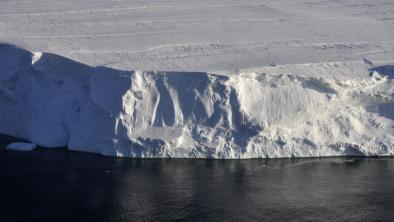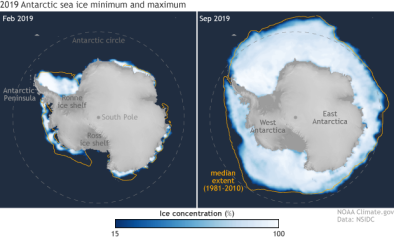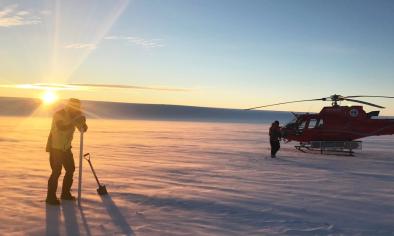Science Source
Meltwater produced by wind-albedo interaction stored in an East Antarctic ice shelf
- States that surface melt and subsequent firn air depletion can ultimately lead to disintegration of Antarctic ice shelves causing grounded glaciers to accelerate and sea level to rise
- States that in the Antarctic Peninsula, foehn winds enhance melting near the grounding line, which in the recent past has led to the disintegration of the most northerly ice shelves
- Provides observational and model evidence that this process also occurs over an East Antarctic ice shelf, where meltwater-induced firn air depletion is found in the grounding zone
- Finds that, unlike the Antarctic Peninsula, where foehn events originate from episodic interaction of the circumpolar westerlies with the topography, in coastal East Antarctica high temperatures are caused by persistent katabatic winds originating from the ice sheet’s interior
- Finds that katabatic winds warm and mix the air as it flows downward and cause widespread snow erosion, explaining >3 K higher near-surface temperatures in summer and surface melt doubling in the grounding zone compared with its surroundingss
- Finds that these winds expose blue ice and firn with lower surface albedo, further enhancing melt
- The in situ observation of supraglacial flow and englacial storage of meltwater suggests that ice-shelf grounding zones in East Antarctica, like their Antarctic Peninsula counterparts, are vulnerable to hydrofracturing
Related Content
Headline

Jan 29, 2020 | BBC News
Journey to the 'doomsday glacier'
Headline

Nov 22, 2019 | NOAA Climate.gov
Understanding climate: Antarctic sea ice extent
Headline

Mar 26, 2019 | The Guardian
Australian researchers find huge lakes beneath largest east Antarctic glacier
Science Source
| Geophysical Research Letters
Mass Loss of Totten and Moscow University Glaciers, East Antarctica, Using Regionally Optimized GRACE Mascons
Yara Mohajerani, Isabella Velicogna, Eric Rignot


